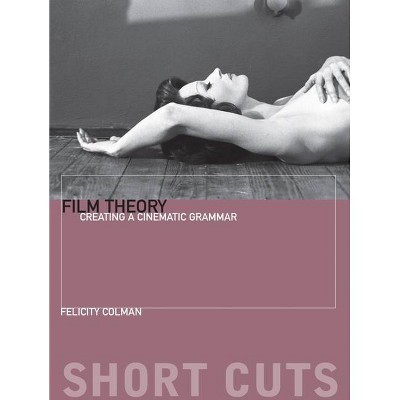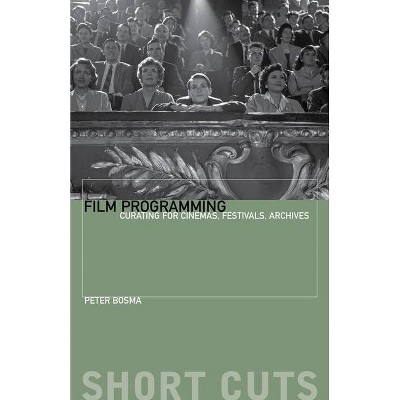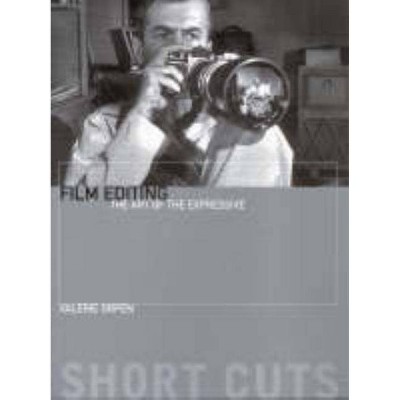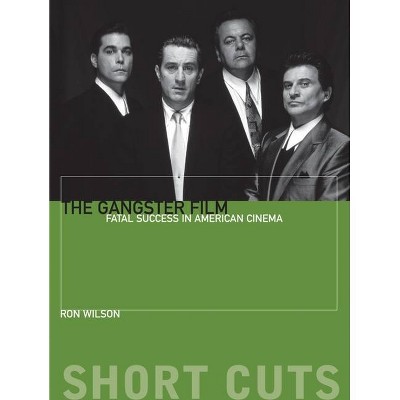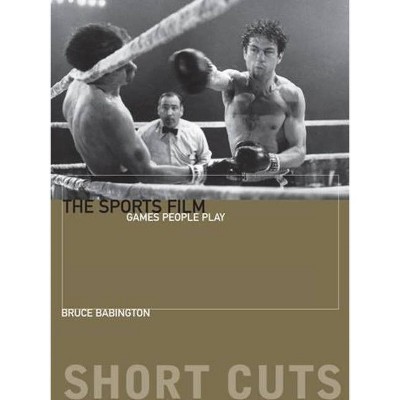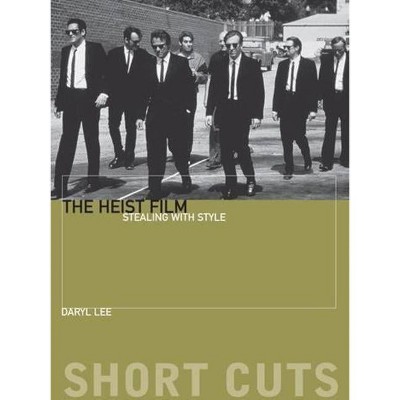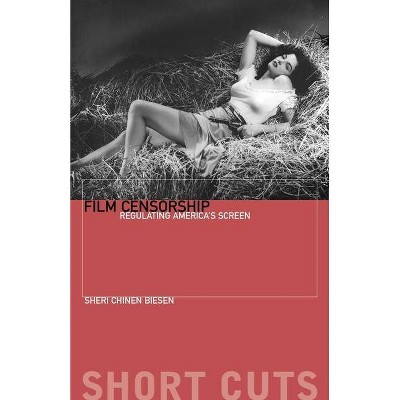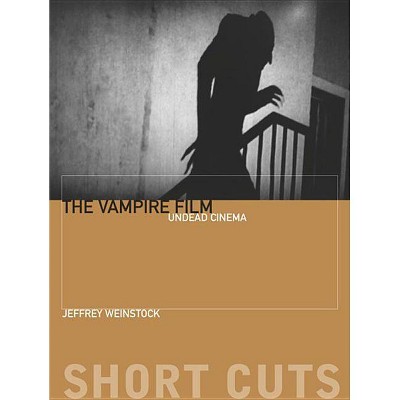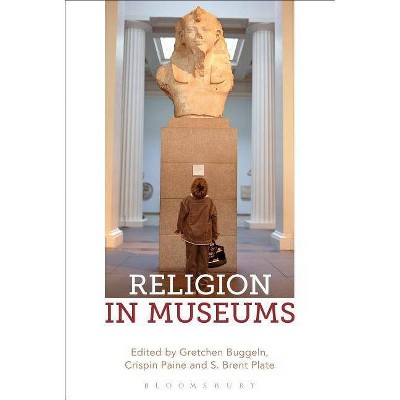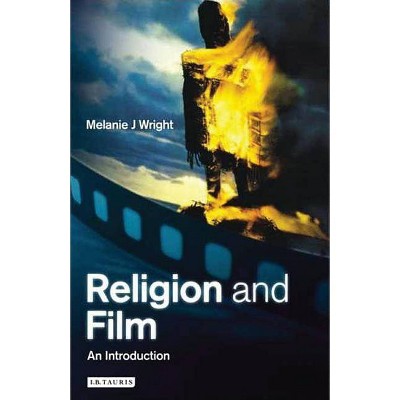Religion and Film - (Short Cuts) 2nd Edition by S Brent Plate (Paperback)

Similar Products
Products of same category from the store
AllProduct info
<p/><br></br><p><b> About the Book </b></p></br></br><i>Religion and Film </i>introduces readers to both religious studies and film studies by focusing on the formal similarities between cinema and religious practices and on the ways they each re-create the world. S. Brent Plate shows that by paying attention to the ways films are constructed, we can shed new light on myths and rituals and vice versa.<p/><br></br><p><b> Book Synopsis </b></p></br></br>Religion and cinema share a capacity for world making, ritualizing, mythologizing, and creating sacred time and space. Through cinematography, mise-en-scène, editing, and other production activities, film takes the world "out there" and refashions it. Religion achieves similar ends by setting apart particular objects and periods of time, telling stories, and gathering people together for communal actions and concentrated focus. The result of both cinema and religious practice is a re-created world: a world of fantasy, a world of ideology, a world we long to live in, or a world we wish to avoid at all costs. <p/><i>Religion and Film </i>introduces readers to both religious studies and film studies by focusing on the formal similarities between cinema and religious practices and on the ways they each re-create the world. Explorations of film show how the cinematic experience relies on similar aesthetic devices on which religious rituals have long relied: sight, sound, the taste of food, the body, and communal experience. Meanwhile, a deeper understanding of the aesthetic nature of religious rituals can alter our understanding of film production. Utilizing terminology and theoretical insights from the study of religion as well as the study of film, <i>Religion and Film </i>shows that by paying attention to the ways films are constructed, we can shed new light on the ways religious myths and rituals are constructed and vice versa. <p/>This thoroughly revised and expanded new edition is designed to appeal to the needs of courses in religion as well as film departments. In addition to two new chapters, this edition has been restructured into three distinct sections that offer students and instructors theories and methods for thinking about cinema in ways that more fully connect film studies with religious studies.<p/><br></br><p><b> From the Back Cover </b></p></br></br>From faint-inducing supernatural horror films to the mythologies of science fiction, from midnight screenings that prompt the creation of new rituals to pilgrimages inspired by films, cinema and religious life are intertwined. <i>Religion and Film </i>seeks out the frames, foci, and bodily engagements that are central to both cinema and religious practices. By analyzing the ways films are made and experienced, S. Brent Plate sheds new light on the ways religious myths, rituals, and symbols are produced and used, and vice versa. This thoroughly expanded and revised edition includes new chapters that offer theories and methods for thinking about cinema in a manner that more fully connects film studies with religious studies. Attention is paid to the production of space, race, and gender on screen, as well as the afterlives of films and the sensual, bodily encounters at the altar and on the screen.<p/><br></br><p><b> Review Quotes </b></p></br></br><br>[This] volume is a stimulating contribution to the field of film and religion that will be read with profit by scholars in the field, graduate students and others with an interest in this conversation.--Stefanie Knauss "Journal of Religion, Film, and Media "<br><br>This new standalone version is erudite yet accessible, with a truly inclusive and knowledgeable appreciation of both cinema and religion.--Joel Mayward "Journal of Film and Religion "<br><br>Contributes crucially to film theory as much as religious studies, marking a pivotal moment in the humanities in which religiosity, mythology, media, and narratology are once again being revisited in the continued critique of the Enlightenment, Western society, and secular humanism.--Reading Religion<br><br>Spiritual questions are still anathema to most film theorists. On the other hand, many religious scholars who dabble in cinema have treated it illustratively and shown a blunt insensitivity to the specifics of film form. This book is exemplary in the cogent and creative way it builds a bridge between these two alienated intellectual worlds. Plate's unfailingly perceptive mise-en-scène analysis discovers the visual mythologizing at work in an eclectic filmography ranging from George Lucas to Dziga Vertov and Stan Brakhage. At the same time, he remains critically aware of politics and ideology, attempting a more inclusive definition of religion that goes beyond the dogmatic and the doctrinal. A wonderfully syncretic study that offers an amazing bricolage of ideas.--Peter Matthews, University of the Arts London<br><br>A truly compelling comparative study. The analogues between filmic and religious worldmaking are richly illuminating, bringing the reader to fresh insights about the structure and dynamics of both mediums. Setting aside the customary approach of simply analyzing religious themes in movies, this volume compares mythic and ritual ways of constructing a world with cinematic processes such as framing, focus, editorial selection, lighting, camera angle, voice, use of time and space, and iconicity--doing so with lucidity, ingenuity, and masterful use of a repertoire of interpretive frameworks.--William Paden, University of Vermont<br><br>Plate gives us the best introduction into the exploration of religion and film by brilliantly interweaving the worldmaking of religious myths and rituals, sacred times, and spaces, with the worldmaking of cinema. Insightful and illuminating, <i>Religion and Film</i> helps us to understand the stagings, structures, and embodiments of film in the light of religion and to rethink the dynamics of religion in the light of film.--David Chidester, author of <i>Authentic Fakes: Religion and American Popular Culture</i><br><p/><br></br><p><b> About the Author </b></p></br></br>S. Brent Plate is a writer, editor, and visiting associate professor of religious studies at Hamilton College. His books include <i>Representing Religion in World Cinema: Filmmaking, Mythmaking, Culture Making</i> (2003); <i>Blasphemy: Art That Offends</i> (2006); and <i>A History of Religion in 51/2 Objects: Bringing the Spiritual to Its Senses </i>(2014). Plate is also cofounder and managing editor of the journal <i>Material Religion: The Journal of Objects, Art, and Belief</i>.
Price History
Price Archive shows prices from various stores, lets you see history and find the cheapest. There is no actual sale on the website. For all support, inquiry and suggestion messages communication@pricearchive.us
